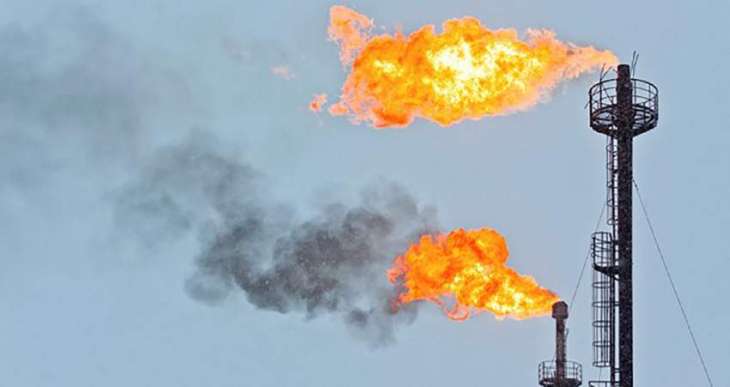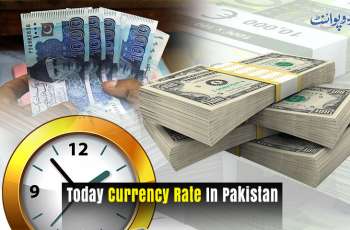The global energy market has suffered one of the most severe crises in 2020 due to the demand downfall induced by COVID-19 and disagreements between the members of the OPEC+ oil producers' alliance, which is expected to prove fragile in 2021 as well
MOSCOW (Pakistan Point News / Sputnik - 07th January, 2021) The global energy market has suffered one of the most severe crises in 2020 due to the demand downfall induced by COVID-19 and disagreements between the members of the OPEC+ oil producers' alliance, which is expected to prove fragile in 2021 as well.
Since the beginning of 2020, the oil prices have been under pressure due to the outbreak of the coronavirus pandemic, which significantly reduced air traffic worldwide, shut production and switched employees to working from home, driving demand for jet fuel and gasoline downward. The global oil demand is expected to contract by almost 9.8 million barrels a day (mbd) in 2020, according to the latest OPEC estimates, while the International Energy Agency (IEA) forecast a downfall of 8.8 mbd this year.
In early March, the oil prices plummeted after Riyadh and Moscow failed to agree on extension of the OPEC+ agreement, dealing a blow to the market already weakened by the pandemic. Following the collapse of the OPEC+ talks, Saudi Arabia flooded the market with cheap oil. As a result, the oil prices remained depressed throughout March.
By April, it was clear the even if the OPEC+ group manages to agree on the new cuts, that would not be enough to support the ailing oil prices. Output was significantly exceeding demand and only cuts by a larger group of producers would have proved effective. This led to not only Russia and Saudi Arabia ultimately mending their differences and reaching a new OPEC+ agreement on April 9, but also other non-OPEC oil producers slashing production as well, among them the US, Canada and Norway. Consequently, up to 15 million barrels a day, including the OPEC+ share of 9.7 mbd, was expected to be taken off the market.
But as the oil producers have failed to react promptly to the ailing demand, oil stocks have been piling up in the storage worldwide, resulting in a glut. This has put additional pressure on the oil prices and even the unprecedented OPEC++ oil cuts have not led to their significant recovery throughout April and May, when both Brent, West Texas Intermediate (WTI) and OPEC Basket traded below $30 per barrel.
Out of all national oil industries worldwide, the US shale oil has perhaps suffered the most from the low oil prices as the cost of production in the United States is about $40 per barrel. While Saudi Arabia and Russia's oil industries are mainly state-owned, the US oil sector is privately owned and highly fragmented since there are many companies of different sizes operating in the market, making it hard to find a consolidated solution.
When the WTI futures fell into negative territory in April, trading at -$37 percent due to the oil inventories overstock, US President Donald Trump had to step in and vowed to add up to 75 million barrels to national strategic reserves. But the move did not rescue some US oil companies from going bankrupt as around 40 US producers have declared insolvency in 2020, according to the Haynes and Boone law firm's latest report. The US shale industry may face up to $300 billion in losses this year, the global accountancy firm Deloitte has said in a study earlier this year.
At the moment, the mid-term outlook for the US oil production does not look bright. This year, the crude oil production is expected to decline by 0.9 mbd and by 0.4 mbd next year, according to the IEA latest estimates.
OPEC+ WITHSTANDS QUARRELS, BUT UNITY IS WEAK
Even though in the second half of 2020 there were reports of some internal OPEC+ differences and Saudi Arabia's discontent with the chronic underperformance with the oil production quotas by some member of the deal such as Iraq and Nigeria, up until late November it seemed that the oil industry and the demand was on path to gradual recovery.
But after the second wave of COVID-19 had hit the countries all around the world, forcing them to reintroduce lockdown measures and reduce air traffic, the OPEC+ members faced a daunting task of whether to extend the 7.7 mbd oil cuts into 2021 or ease the oil output cuts in accordance with the April agreement, to 5.8 mbd starting from January 1. The OPEC formal and informal consultations, held in early December, took days to reach a consensus, with some of the meetings being rescheduled as the oil producers were deliberating their next move.
According to media reports, the OPEC+ talks have been also complicated by the standoff between two historic allies Saudi Arabia and the UAE. Abu Dhabi reportedly was displeased with the steady underperformance of some OPEC+ members such as Iraq and Russia, while the UAE itself is pressured to showcase 100 percent compliance. The Emirates also called on the underperformers to continue slashing more oil output to offset previous shortcomings.
Ultimately, in what seems like a compromise, the OPEC+ producers agreed to increase oil output by 500,000 barrels per day in January. This corresponds to a decrease of 7.2 million barrels per day from the October 2018 level. Further, the OPEC+ will make decisions on oil production level for the following months, with monthly adjustments not exceeding 500,000 barrels per day.
"Although the OPEC+ group failed the deliver the most widely expected outcome � a three-month extension of the current level of cuts, it still achieved what is possible in current circumstances rather than ending the meeting without a deal. I would have preferred an extension of the current OPEC+ cuts of 7.7 mbd for three months until the end of March 2021 to reassure the market that OPEC+ is determined to defend the oil price at any cost. Failing to agree on the extension would have meant squandering the recent oil price gains and would have given the wrong signal to the market," Dr.Mamdouh G. Salameh, an international oil economist, told Sputnik.
Even though the volume of the oil cuts failed to reached expectations, the OPEC+ deal will nevertheless help "to accelerate the depletion of global oil inventories," which have been packed throughout 2020, the expert noted.
As for the resilience of the OPEC+ agreement in light of the reported quarrels, the experts believe that the alliance will continue to be fragile.
"This year showed an increase in tension within OPEC +, as at the beginning of the year Russia announced its withdrawal from the deal, in November representatives of the UAE announced the same, and, for example, Libya, which did not have a quota for a reduction in production due to internal political conflicts, is now actively increasing production and is not going to join the deal. All this increases tension and competition in the oil market with reduced demand, and hence the fragility of the coalition and the likelihood of its collapse," Ekaterina Grushevenko, expert at the Skolkovo Energy Center, told Sputnik.
Salameh is more positive on the future of the oil deal and believes that a collapse is unlikely.
"The alliance between OPEC and non-OPEC members, led by Russia, amounts to a 'marriage of convenience' driven by one and only one factor, namely ensuring higher oil prices and stability of the global oil market. Once prices start to surge as is expected, members of OPEC+ will start pursuing their own divergent interests particularly Saudi Arabia and Russia. However, this doesn't mean that OPEC+ will fall apart. The alliance between OPEC and particularly Russia has proven very successful in preventing a collapse of oil prices and will continue to play a pivotal role in ensuring stability of the market and prices," Salameh, who also serves as a visiting professor of energy economics at the ESCP Europe Business School in London, said.
The OPEC+ is expected to discuss the oil cuts deal again and make a decision on the monthly additional cuts on January 4, via a videoconference.



